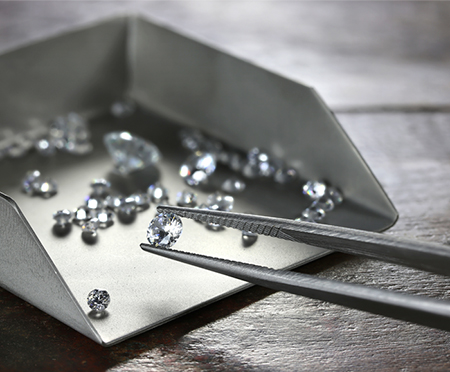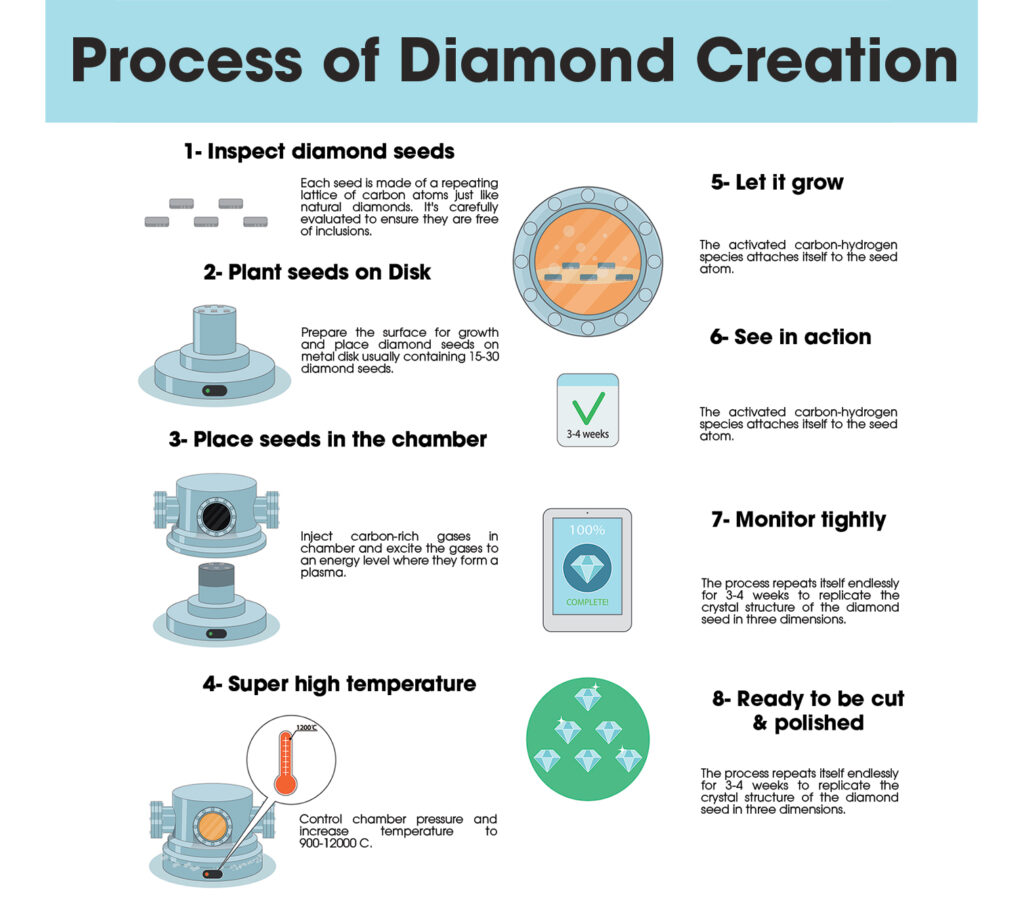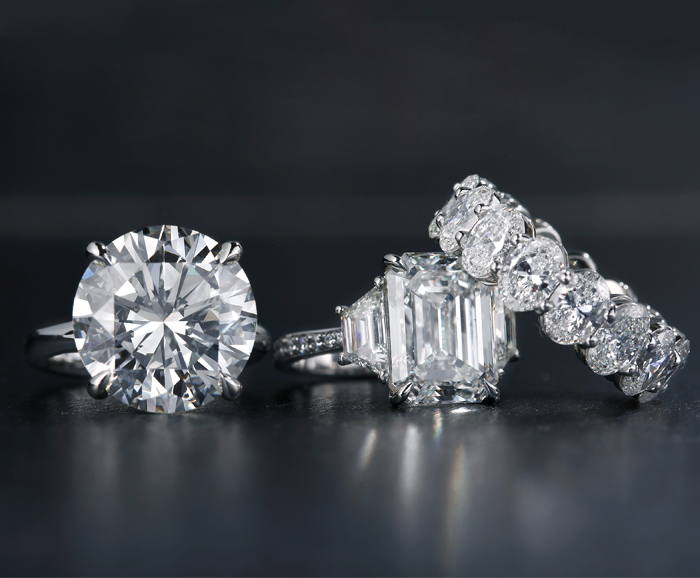Lab-Created Diamonds

Lab Grown Diamonds
Learn more about diamond shape, size, color, cut & clarity.

Round Oval Cushion Princess Square Radiant Marquise Heart Emerald Asscher Pear
What Are Man-Made Diamonds?
Lab-grown diamonds are diamonds that are made in a controlled lab environment. They have the same chemical, physical, and optical properties as natural diamonds, with the only difference being their point of origin. Similar to their natural counterparts, lab-grown diamonds are evaluated with the 4 C’s: color, clarity, cut, and carat weight. You can also find lab-grown diamonds in the same shapes – including princess, round brilliant, and emerald – as natural diamonds.


What Are Man-Made Diamonds?
Lab-grown diamonds are diamonds that are made in a controlled lab environment. They have the same chemical, physical, and optical properties as natural diamonds, with the only difference being their point of origin. Similar to their natural counterparts, lab-grown diamonds are evaluated with the 4 C’s: color, clarity, cut, and carat weight. You can also find lab-grown diamonds in the same shapes – including princess, round brilliant, and emerald – as natural diamonds.

What Are Man-Made Diamonds?
Because diamond-growing technology is relatively new, there are still some uncertainties floating around about lab-grown diamonds.
Although they are created in a lab, these diamonds have all the same qualities as their natural counterparts and are just as real. This makes them very different from diamond simulants, like cubic zirconia or moissanite, which are stones designed to mimic the look of real diamonds but don’t possess the same physical, optical, and chemical qualities.
You may also come across treated diamonds, which are different from lab-grown diamonds and diamond simulants. This refers to natural or lab-grown diamonds that have been altered to improve their clarity and/or color. Technology like laser drilling and fracture filling can be used to reduce the visibility of inclusions and other clarity characteristics.

Lab Diamonds FAQ
Like natural diamonds, lab created diamonds will vary in color, clarity, and cut. Each one is unique. Lab created diamonds may contain minor internal or surface inclusions, comparable to high quality natural diamonds. Lab diamonds are evaluated and graded by independent gemological labs that certify natural diamonds, using the same strict standards.
Lab created diamonds offer excellent value, and are more affordable than natural diamonds of comparable size and quality.
Yes, just like a mined diamond, lab created diamonds can be insured.
Lab created diamonds display the same physical, chemical, and optical characteristics as natural diamonds, along with the same fire, scintillation, and sparkle. They are real diamonds. Lab created diamonds are nearly impossible to differentiate from natural diamonds with the naked eye. Lab grown diamonds can be distinguished from natural diamonds if specialized equipment is used to test them.
Since they are physically and chemically the same as naturally mined diamonds, lab created diamonds do not have a lower durability and will not get cloudy over time.
Customers looking for a mining-free alternative or a larger stone within their budget may prefer lab diamonds as they are generally at a lower price point compared to naturally mined options. As with any gemstone, the resale value can vary over time. Since lab diamonds are a more recent introduction to the market, there is more uncertainty on future pricing, when compared to natural diamonds.
Phosphoresce refers to a phenomenon of a glow in the dark effect that some diamonds will exhibit after being exposed to shortwave UV light. This effect exists in some lab grown diamonds and natural diamonds as a result of an interaction between the UV light and some of the trace elements in the diamond. This effect particularly occurs in some natural, fancy-colored blue diamonds due to the interaction between the UV light, boron, and nitrogen in the gems.
A diamond may be mistakenly identified as a moissanite when using some diamond testers due to their similarity in thermal conductivity. Professionals can easily distinguish between the two gems due to their differing refractive properties, with moissanites being double refractive and diamonds being single refractive.
